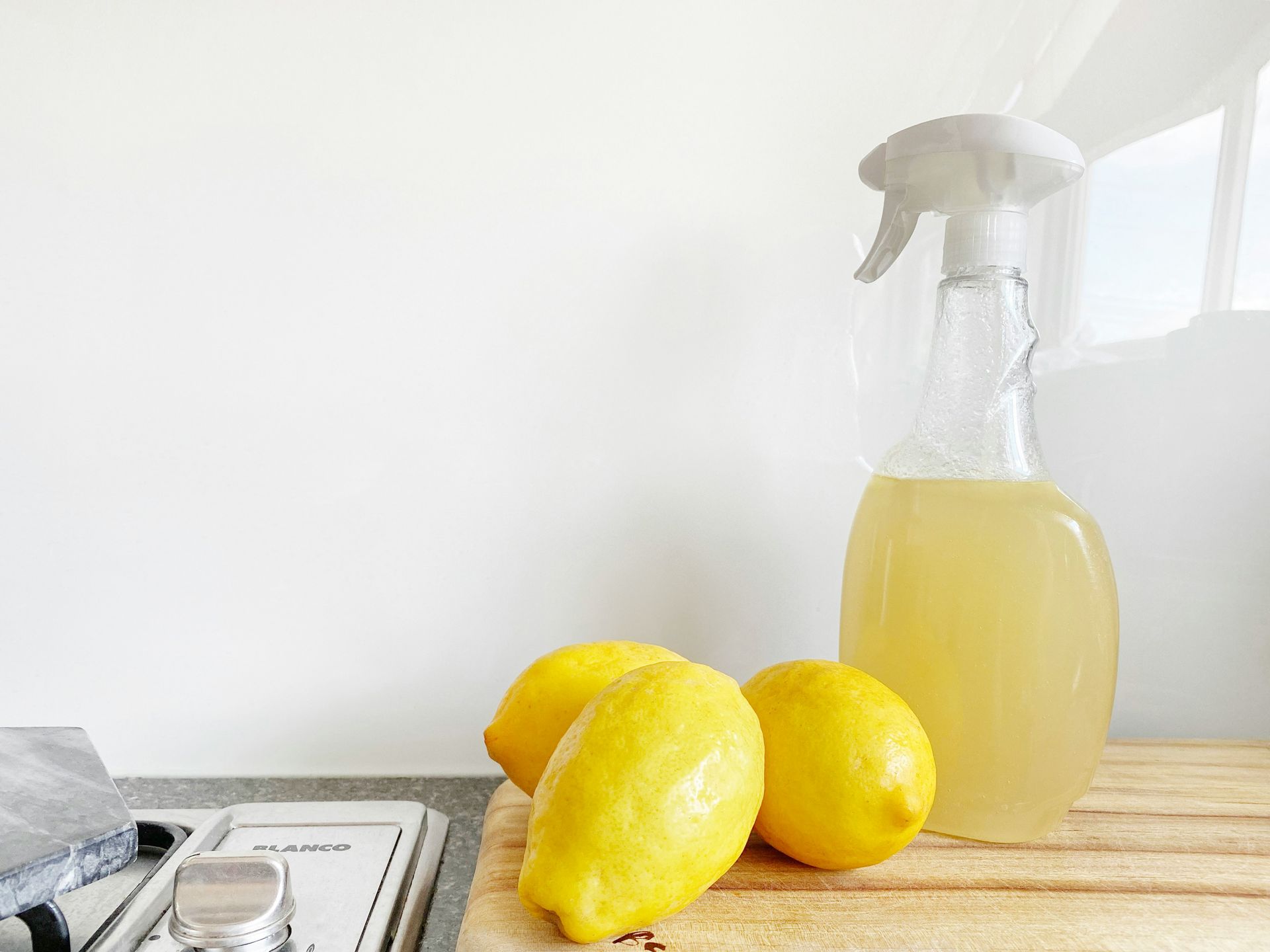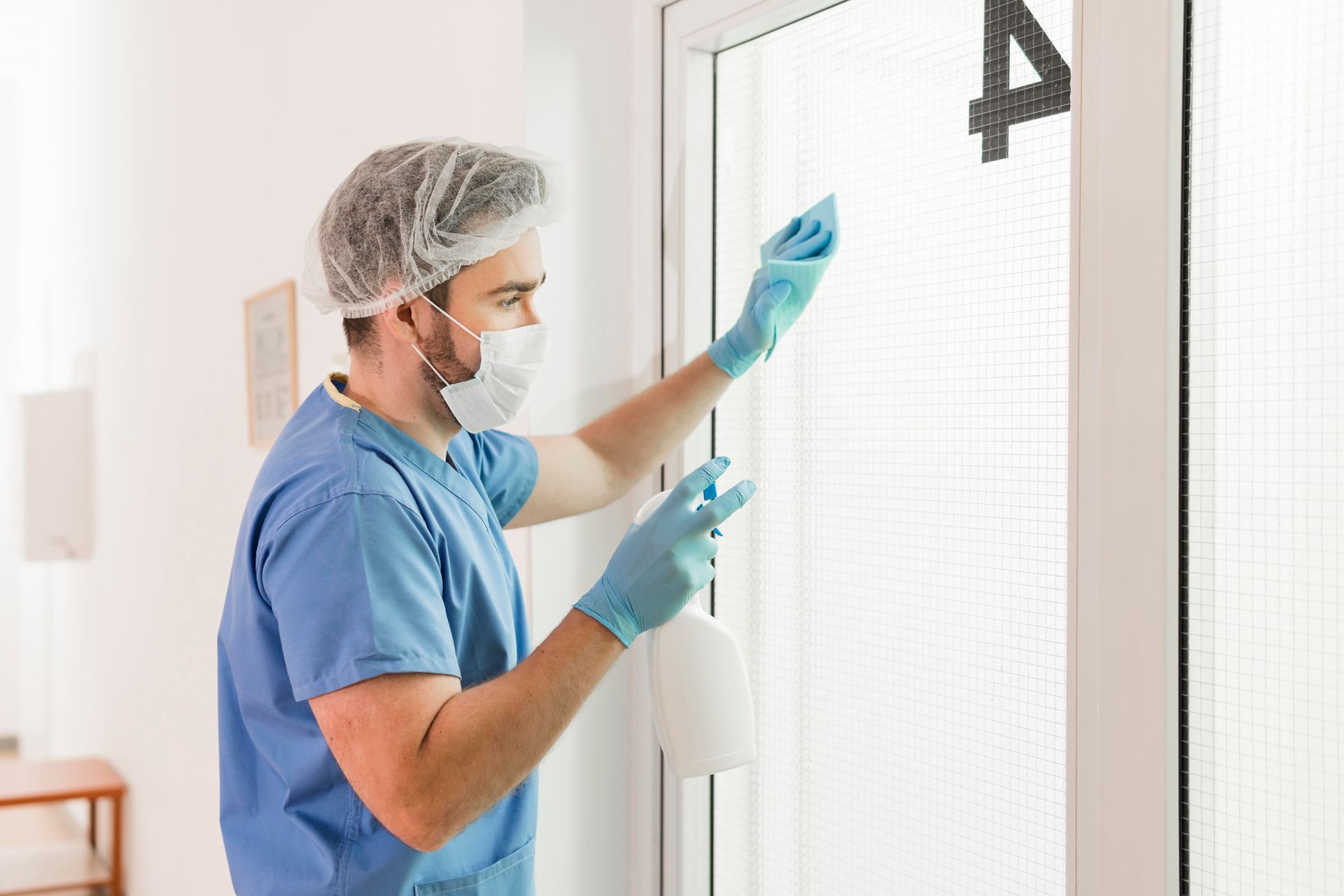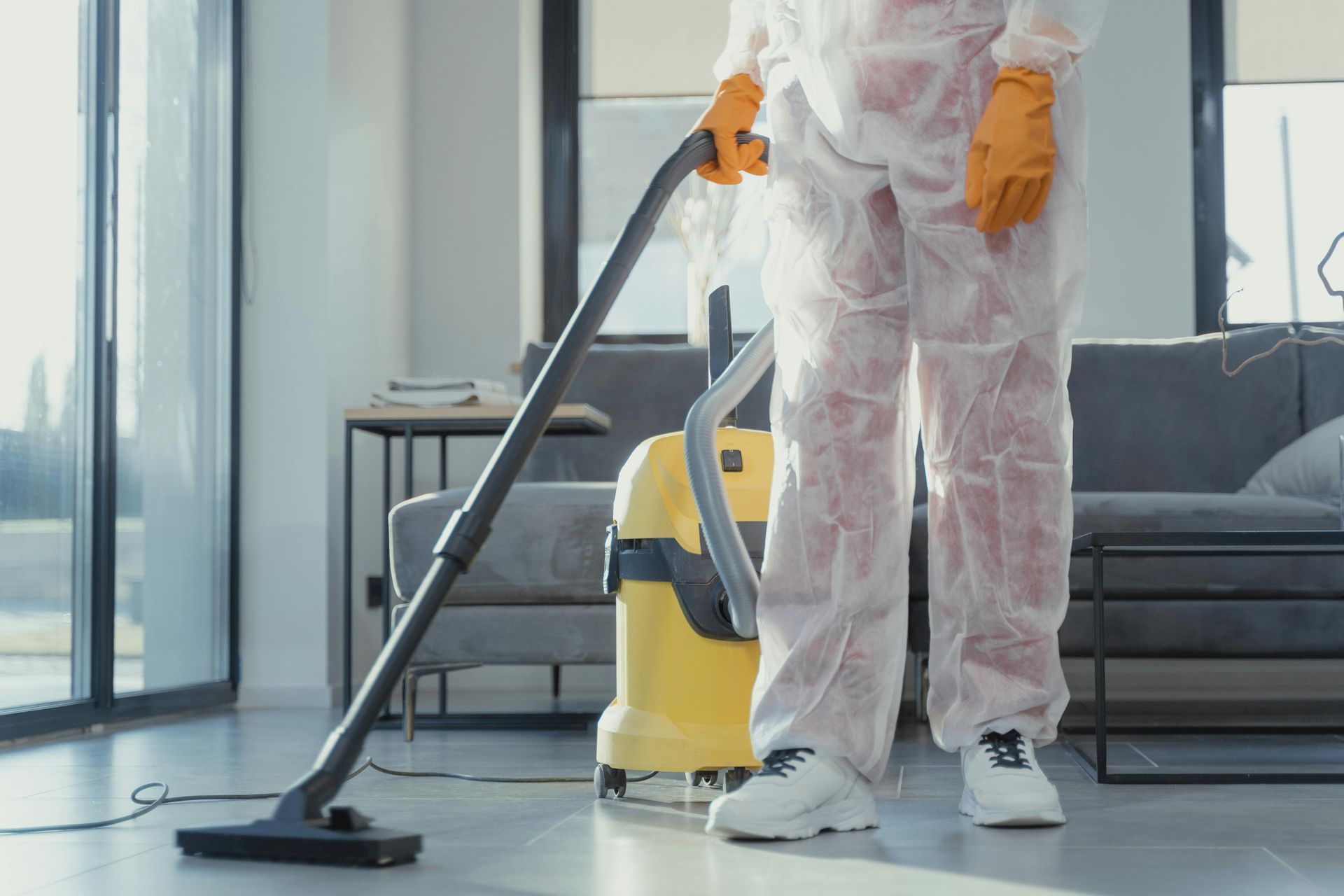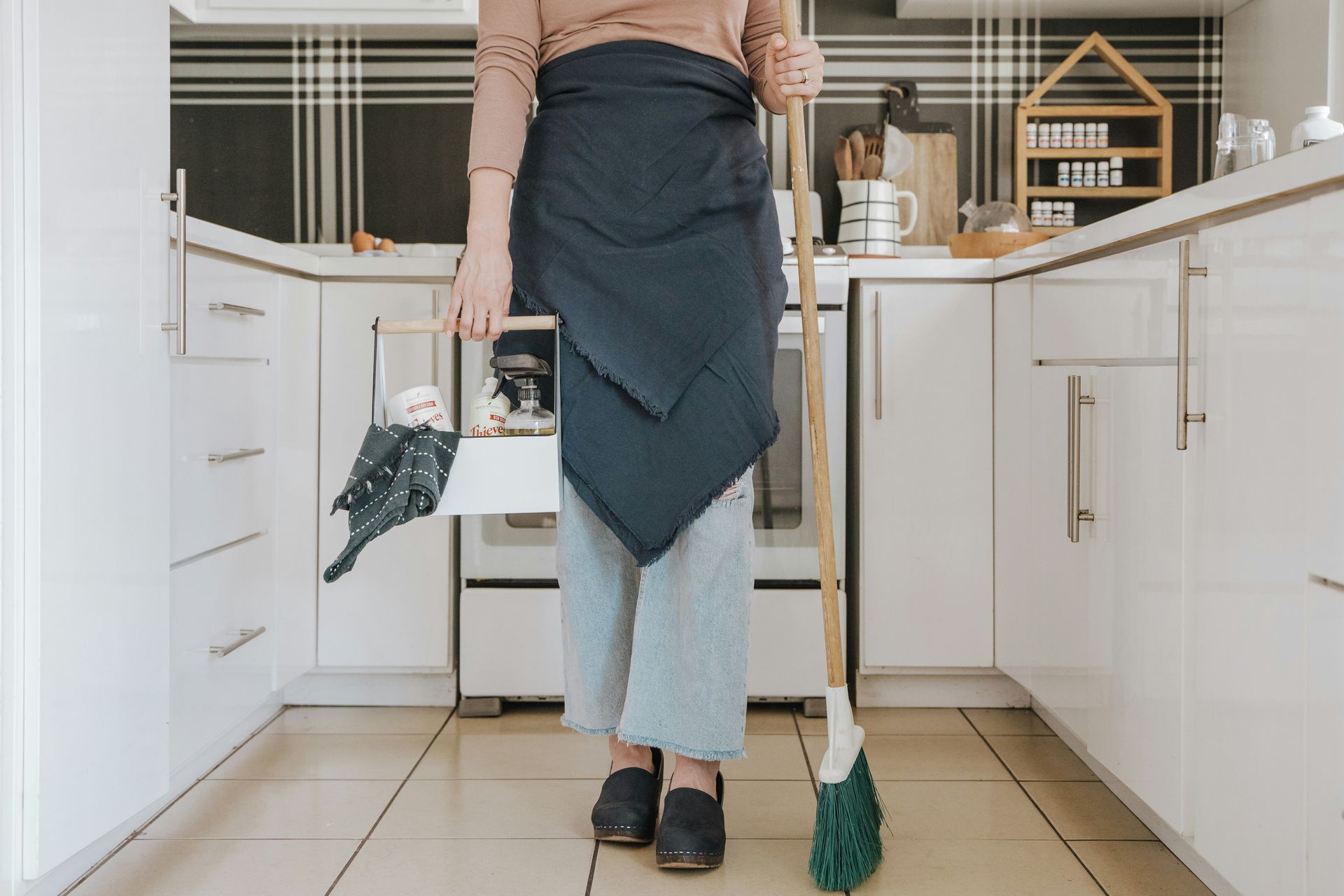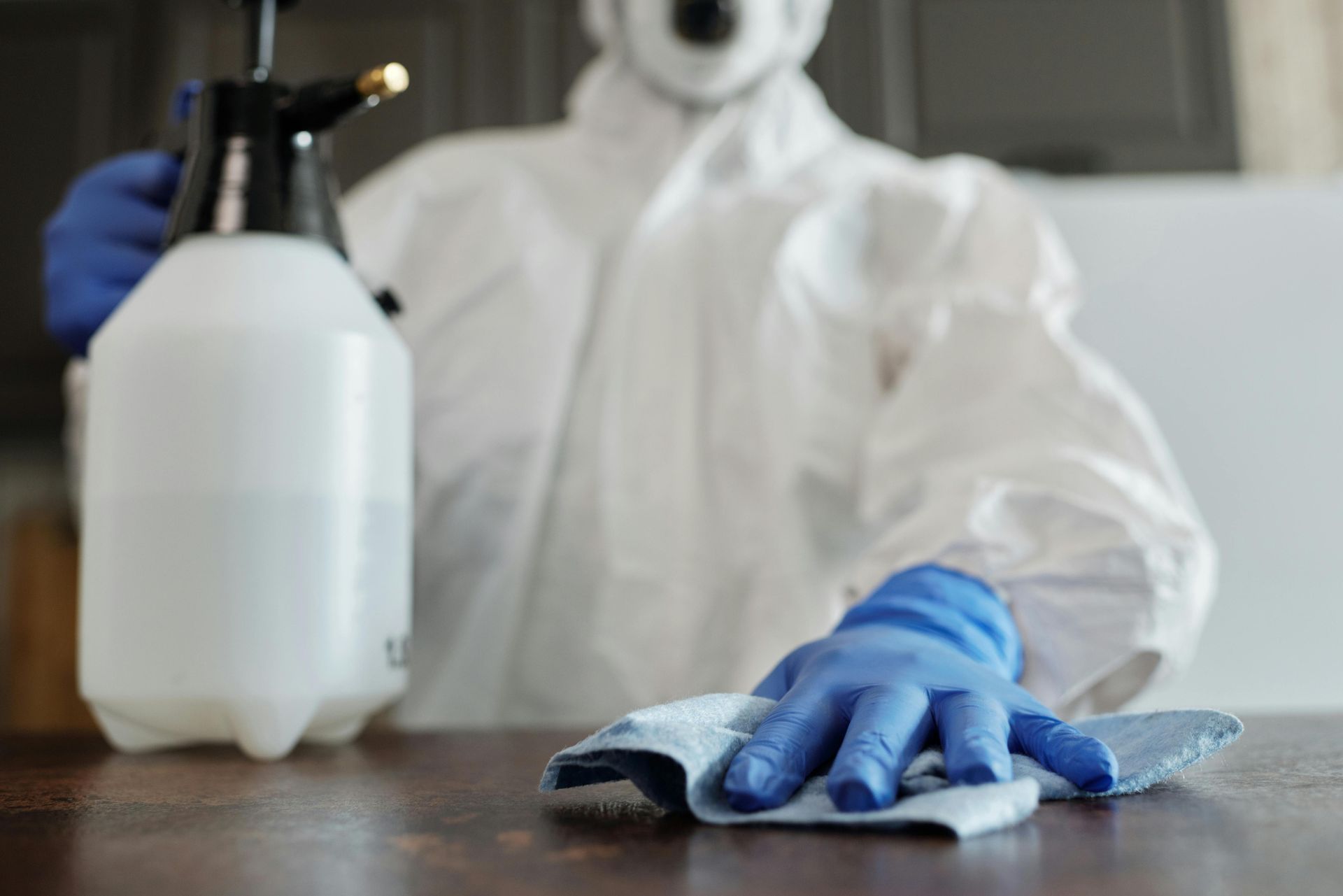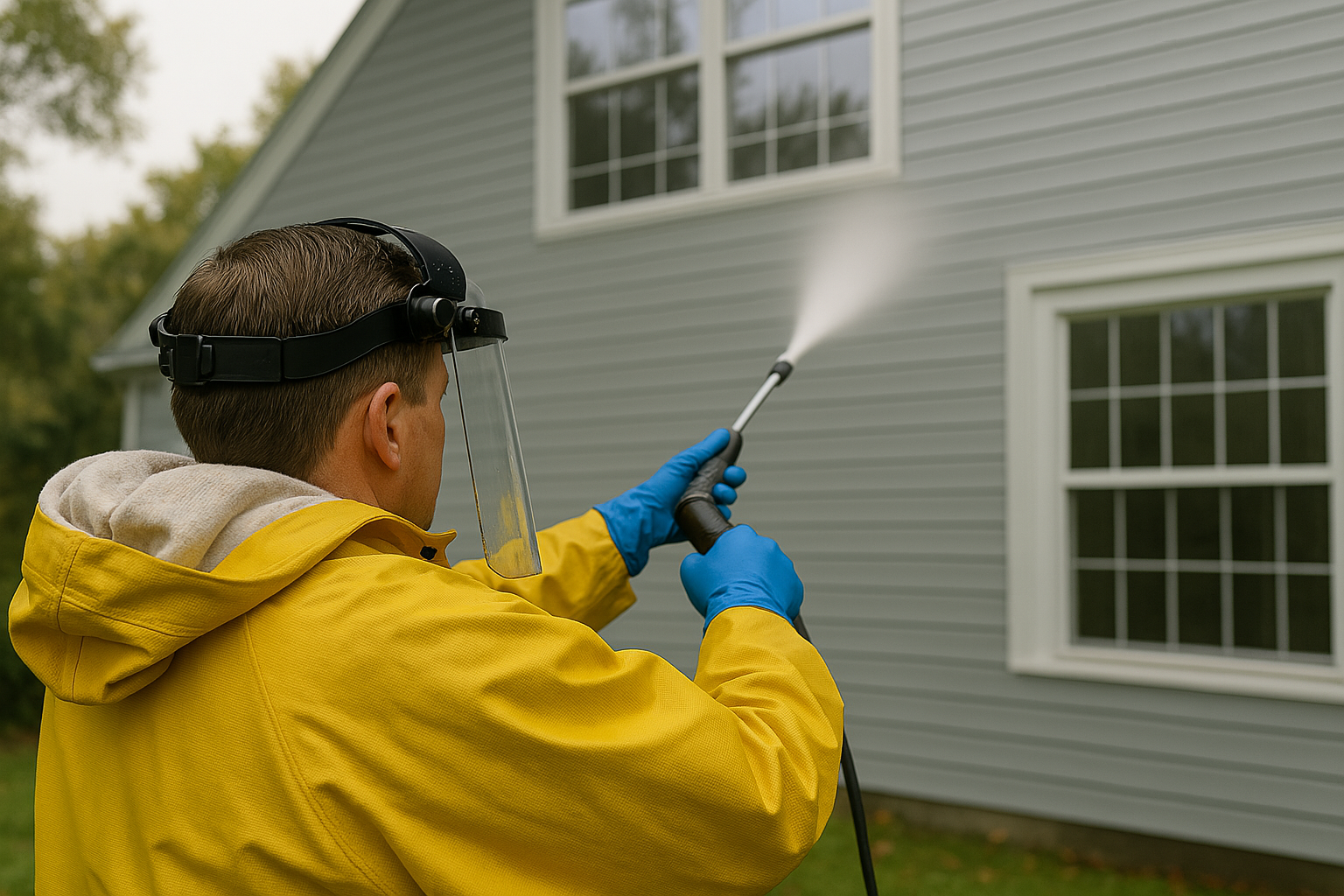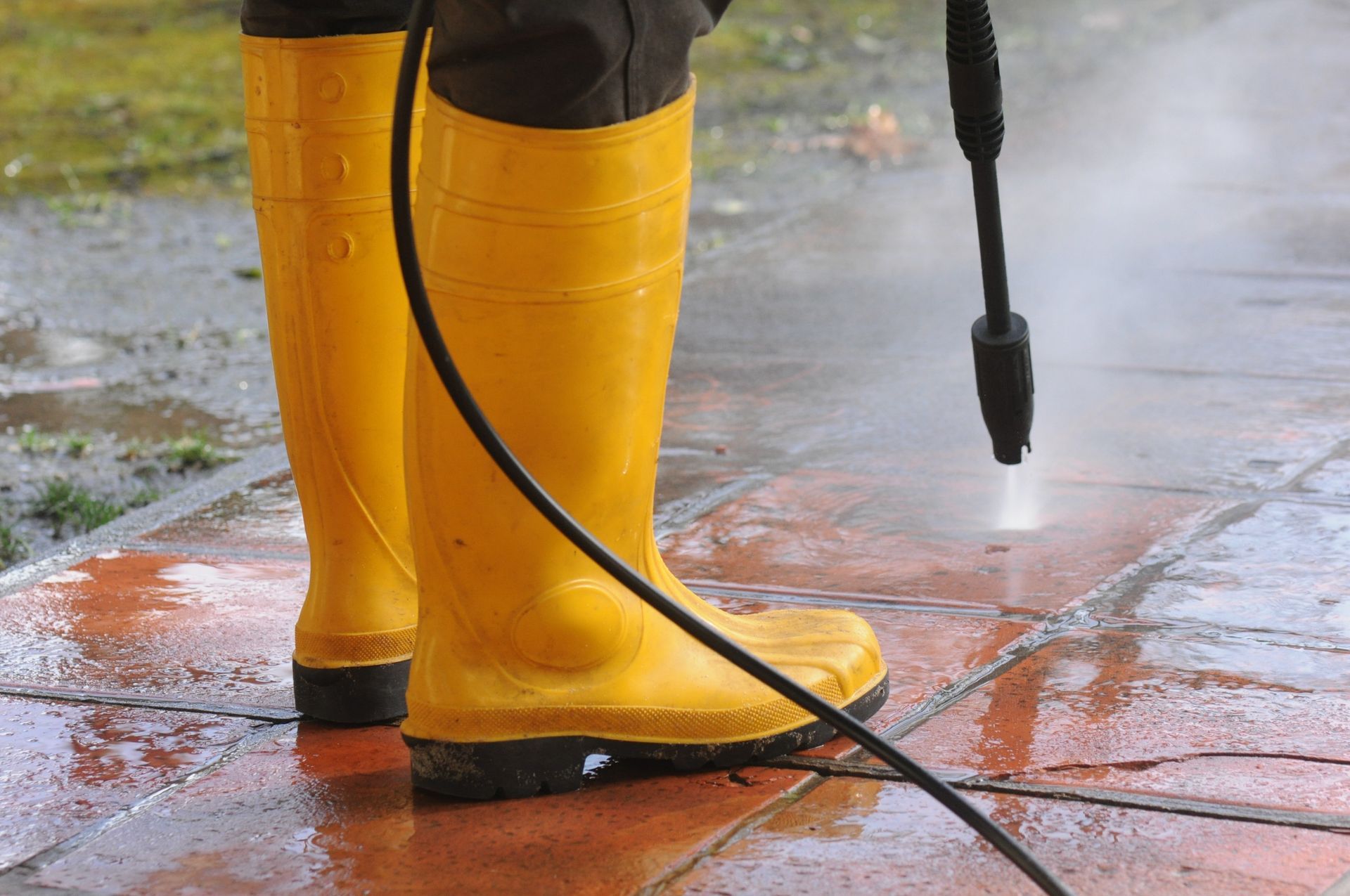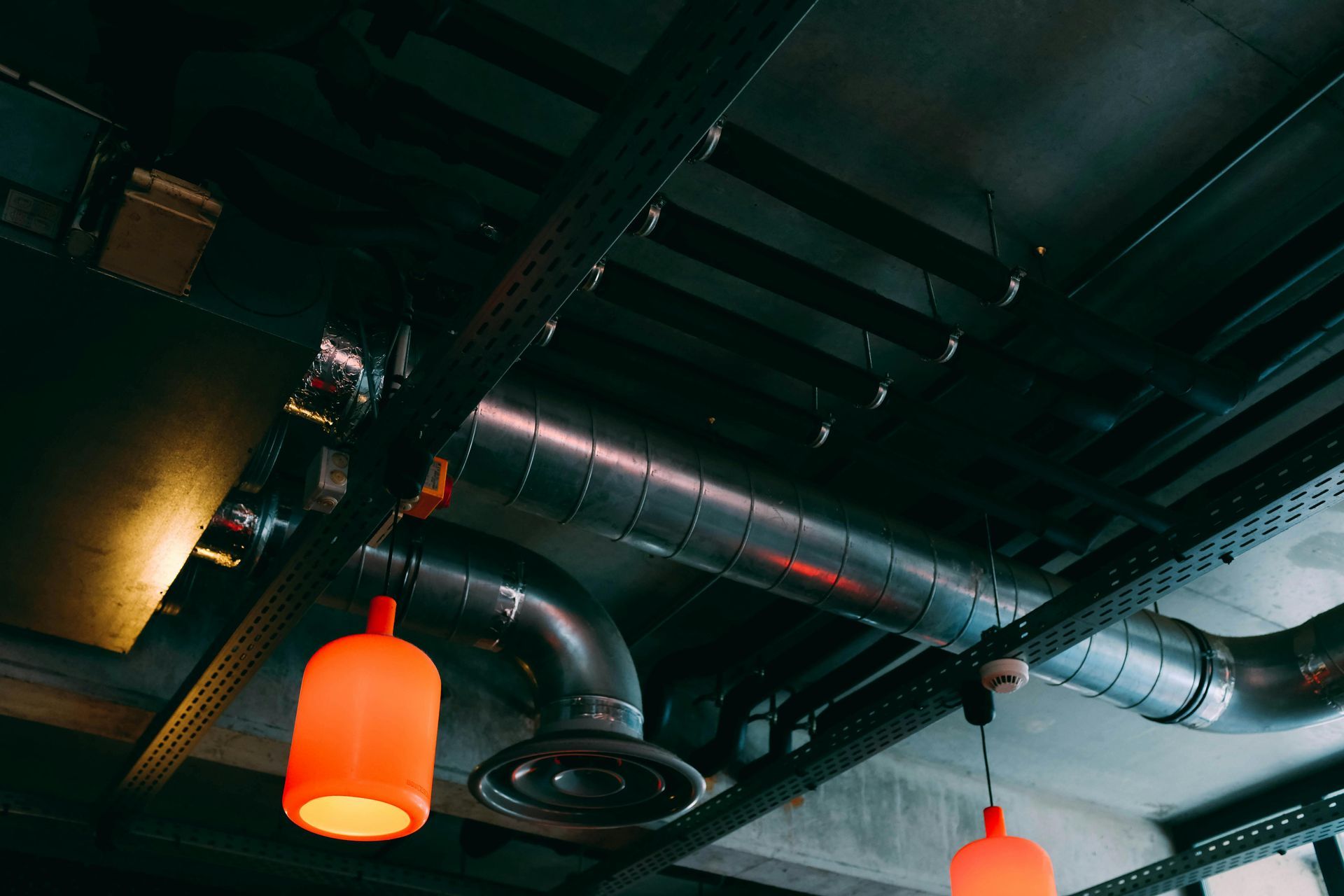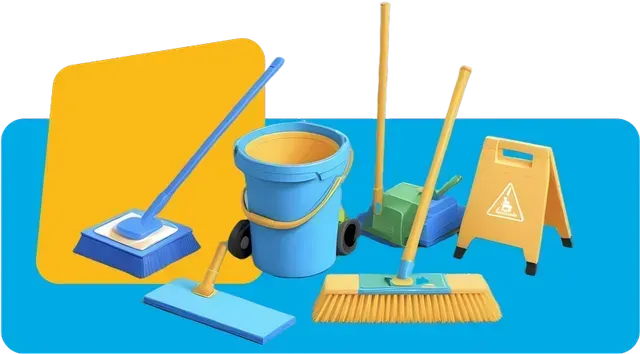The Complete Carpet Care Guide: Easy Steps for Spotless Floors (+ Maintenance Tips)
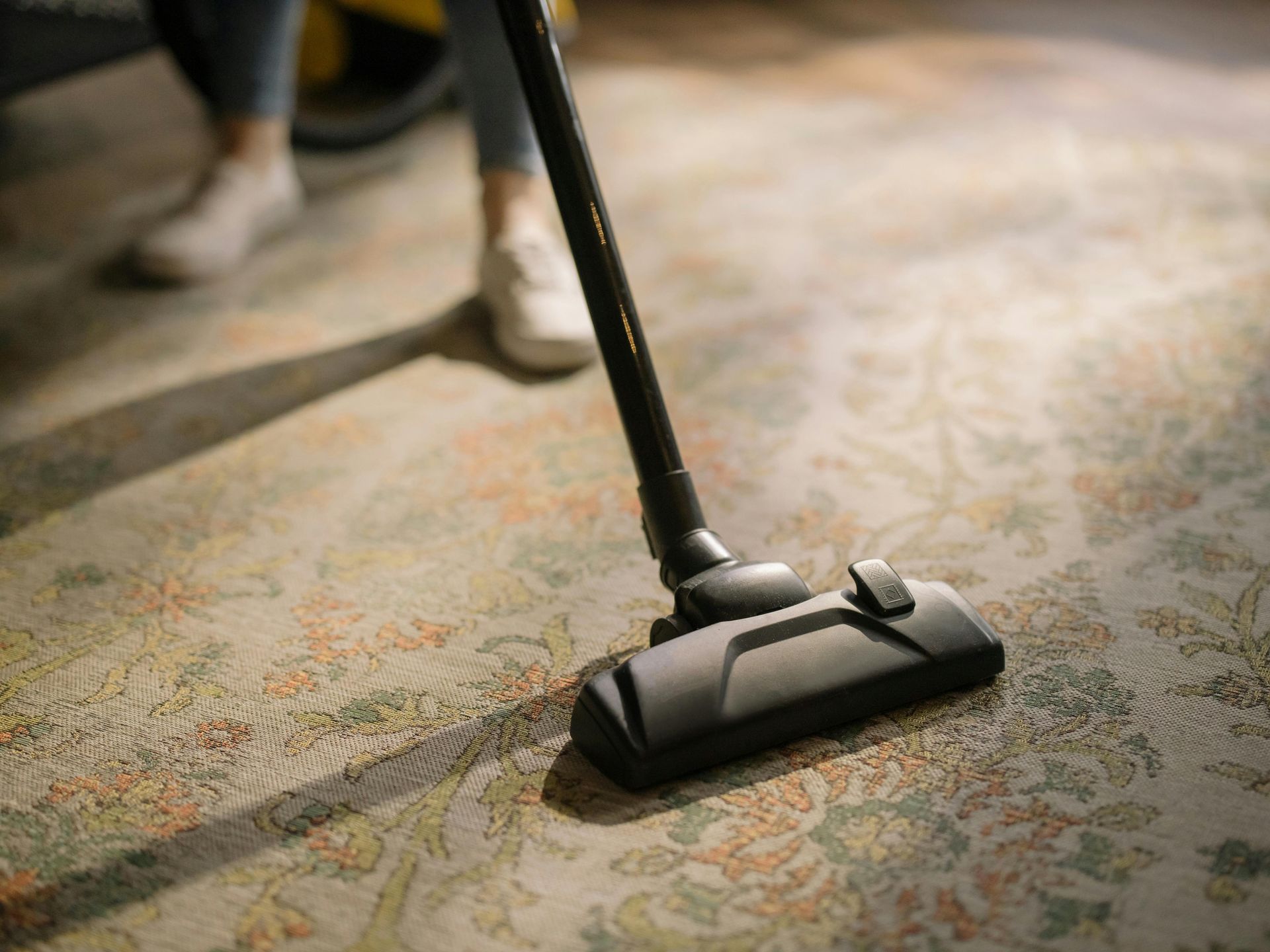
Carpets are more than just floor coverings: they are an integral part of our living space and contribute an important role in enhancing the comfort, aesthetics, and warmth of our home.
However, they also tend to trap dust, allergens, and dirt particles, which over time accumulate deep within the carpet fibres. This buildup not only affects the carpet’s appearance but also induces severe health problems, especially for sensitive individuals.
Due to this reason, like any other type of flooring, carpets also require regular care to maintain their beauty and durability.
That is why, we’ve made this complete carpet care guide for you!
Let’s get straight into it, shall we?
The first step to effective carpet care is to understand the type of material your carpet is made from, and its specific characteristics.
Let’s talk about it first.
Understanding Your Carpet Types
While cleaning and maintaining your carpet, it is essential to understand that different carpet materials require specific cleaning methods to maintain their appearance and durability.
Choosing the wrong products and techniques can damage the fibres and result in discolouration, or shorten the carpet’s lifespan.
Below are the most common carpet types and their respective care guide:
Wool Carpets
Wool carpets are naturally soft and durable and so require gentle care to maintain their integrity.
They are highly absorbent and are sensitive to excessive moisture—meaning they are prone to shrinkage and mildew growth if exposed to excessive moisture while cleaning.
To clean wool carpets effectively, opt for low-moisture cleaning methods like dry cleaning or foam shampooing.
Nylon Carpets
Nylon carpets are known for their resistance against moisture, hence can withstand deeper cleaning methods such as steam cleaning (hot water extraction).
However, regular vacuuming is required to prevent dirt buildup and maintain their appearance.
Polyester Carpets
Polyester carpets are an affordable option with hydrophobic properties: meaning they repel moisture and resist stains.
However, they tend to attract oily residues and retain soil. They also loosen their shape and become matted in high-traffic areas. Regular vacuuming is recommended to maintain their appearance and longevity and can be effectively cleaned using steam cleaning or shampooing.
Olefin Carpets
Polypropylene carpets are highly resistant to moisture, stains, and mildew. This property makes them an ideal choice for basement or outdoor spaces.
However, they are prone to fading under direct sunlight, therefore, it is better not to expose olefin carpets to the sun directly.
To remove deep-seated dirt, opt for the steam cleaning (hot water extraction) method.
Step-by-Step Guide for a Spotless Carpet Floor
A clean and well-maintained carpet not only enhances the beauty of your home but also promotes a healthier living environment. While professional cleaning is essential from time to time, adopting simple cleaning habits can keep your carpet looking fresh for years.
Let’s walk through a step-by-step approach to maintaining a spotless floor:
1. Vacuum Regularly

One of the most important things in caring for your carpet is to vacuum thoroughly and frequently. It is an effective way to remove dust, dirt, pet hair, and allergens before they accumulate in the carpet fibre.
The frequency of vacuuming will depend on the foot traffic, the presence of pets, and the type of carpet you have. High-traffic areas, such as hallways and living rooms should be vacuumed daily or at least every other day to prevent dirt buildup.
In bedrooms, dining rooms, or other moderate traffic areas you should be cleaned bi-weekly.
Less frequented zones might suffice with weekly attention.
Similarly, if you have pets, it is recommended to vacuum daily to remove pet hair, dander, and odours.
Note: Using a vacuum with a HEPA filter is recommended to effectively capture fine dust and allergens. Also, ensure slow and deliberate vacuuming motions to remove dirt effectively.
2. Stains Removal
Spills and accidents are expected, especially if you have kids or pets. However, taking quick action will prevent stains from settling deep into your carpet—leaving no trace behind.
Start by inspecting your carpet for any visible stains and treat them promptly using the appropriate cleaning solutions.
A mild detergent solution or a white vinegar mixture works well for most stains, or you can simply buy any commercial carpet cleaner for stain removal. These solutions effectively break down the stains without damaging the carpet fibres.
When cleaning the stain, don’t rub it. Instead, use a clean, absorbent cloth or white paper towel to gently press on the spot and lift the liquid. Try not to spread it—start at the outer edges and work your way toward the centre.
Once the stain is gone, gently dab the area with clean water to rinse away any leftover residue.
Repeat if necessary.
Pro Tip: Before using any cleaning solution, it is best to test it on the smaller, less visible area of the carpet to ensure it doesn’t cause discolouration or damage. If the test area dries without any issues, proceed with cleaning the stain.
3. Choose the Right Cleaning Method
Selecting the right cleaning method is essential to preserve the appearance and durability of your carpet fibre. This approach depends on the type of carpet fibre, the level of dirt, and specific stains.
The most common carpet cleaning methods include:
Steam Cleaning (Hot Water Extraction)
Steam cleaning is one of the most effective methods for deep cleaning carpets, especially in high-traffic areas or homes with pets.
In this method, hot water mixed with a cleaning solution is injected into the carpet fibres and a powerful vacuum is used to extract the water along with dirt, debris, and cleaning solution.
This deep cleaning technique is usually recommended by the manufacturers and is ideal for heavily soiled carpets. However, due to deep cleaning, it requires a longer drying time, roughly between 6–24 hours.
Dry Cleaning (Low-Moisture Cleaning)
Dry cleaning is an excellent option for delicate carpets that cannot tolerate moisture, such as wool.
In this method:
- A special cleaning compound is applied evenly across the carpet surface to absorb dirt and oil.
- A carpet brush or rotary machine is used to agitate the cleaning agent and loosen the soil.
- And, the area is vacuumed thoroughly to remove the residue.
Since this method uses minimal water, it is ideal for moisture-sensitive fibres, and also for busy spaces that require quick turnaround times (you don’t have to wait to dry it up).
Shampooing
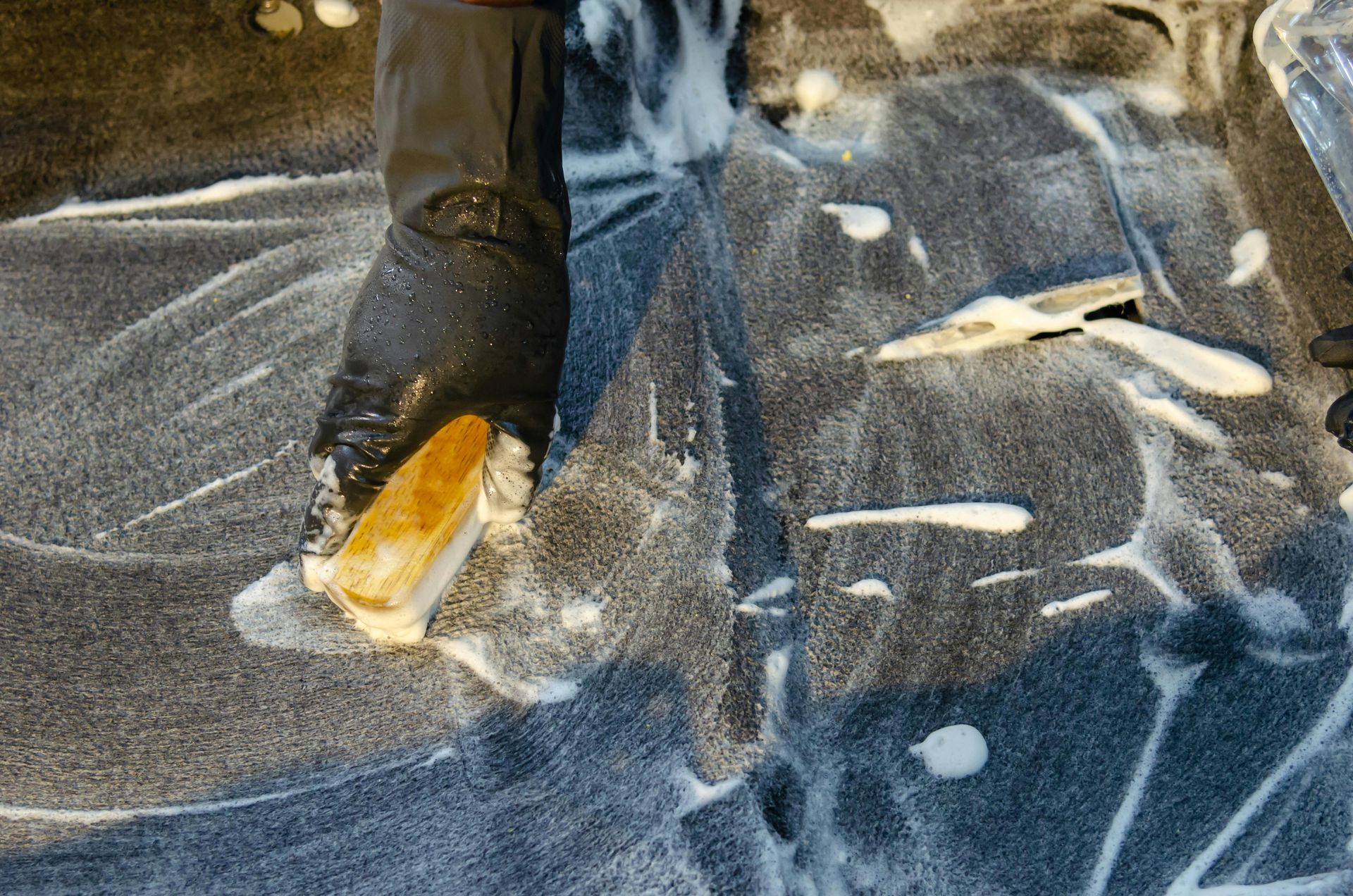
Shampooing is a traditional yet highly effective method for deep-cleaning heavily soiled carpets.
In it, a foamy carpet shampoo is applied using a brush or rotary machine to loosen the grime. After that, the shampoo is rinsed out and the carpet is extracted with vacuum.
This method removes tough stains, refreshes, and deodorises the carpet, but requires thorough rinsing to prevent sticky residues.
DIY Deep Cleaning
For regular maintenance in between professional cleaning sessions, DIY cleaning methods can be effective. Try eco-friendly cleaning solutions such as vinegar and baking soda. These simple homemade solutions can effectively address spills and stains.
Note: Carefully check your carpet’s warranty before trying any DIY solutions as most manufacturers void claims after homemade cleaning.
4. Rinse and Dry Out
After deep cleaning, it is essential to rinse the carpet thoroughly to remove any detergent residues. It is because if any soap residue remains, the carpet becomes sticky and attracts dirt particles.
After that, use a dry vacuum or extraction machine to extract excess moisture from the carpet.
Drying the carpet properly is just as important.
If the carpet remains damp for too long, it will attract mould and mildew, which results in an unpleasant and musty smell. To speed up the drying process you can use fans, open windows, or simply use a dehumidifier.
Pro Tip: Avoid walking on the carpet until it is fully dry to prevent dirt from sticking to the damp fibres.
5. Clean Carpets Professionally
Over time dirt, allergens, and bacteria accumulate deep into the carpet fibre which becomes difficult to remove with regular vacuuming or any other DIY methods.
That’s where professional deep cleaning comes in.
Professional carpet cleaning extends beyond surface cleanliness and helps remove deep-seated contaminants. Ideally, carpets should be cleaned professionally every 6–18 months, depending on the foot traffic, pets, and household activities.
When choosing a professional cleaning service, look for one that uses eco-friendly and non-toxic products. This ensures you a safe and effective cleaning without exposing your home to harsh chemicals.
Preventing & Fixing Carpet Wear & Tear
Carpets experience natural wear and tear, especially in high-traffic areas and under heavy furniture. Proper maintenance helps preserve their texture and appearance while preventing damage.
Remove Furniture Dents
Heavy furniture can leave dents in your carpets. Therefore, to avoid uneven wear and tear on carpets periodically rearrange your carpets to distribute the foot traffic evenly across the carpet.
If dents have already formed, try these simple methods to restore your carpet’s texture:
- Gently stroke the area with the edge of the coin to lift the fibres.
- Place an ice cube on the dents and let them melt completely. Once fully, absorbed, gently fluff the area with a spoon or a soft brush. The moisture helps loosen the compressed fibres.
- Vacuuming over dents can also help lift the fibres back into place.
These simple methods remove dents from your carpets and restore its original shape.
How to Protect and Maintain Your Carpets?
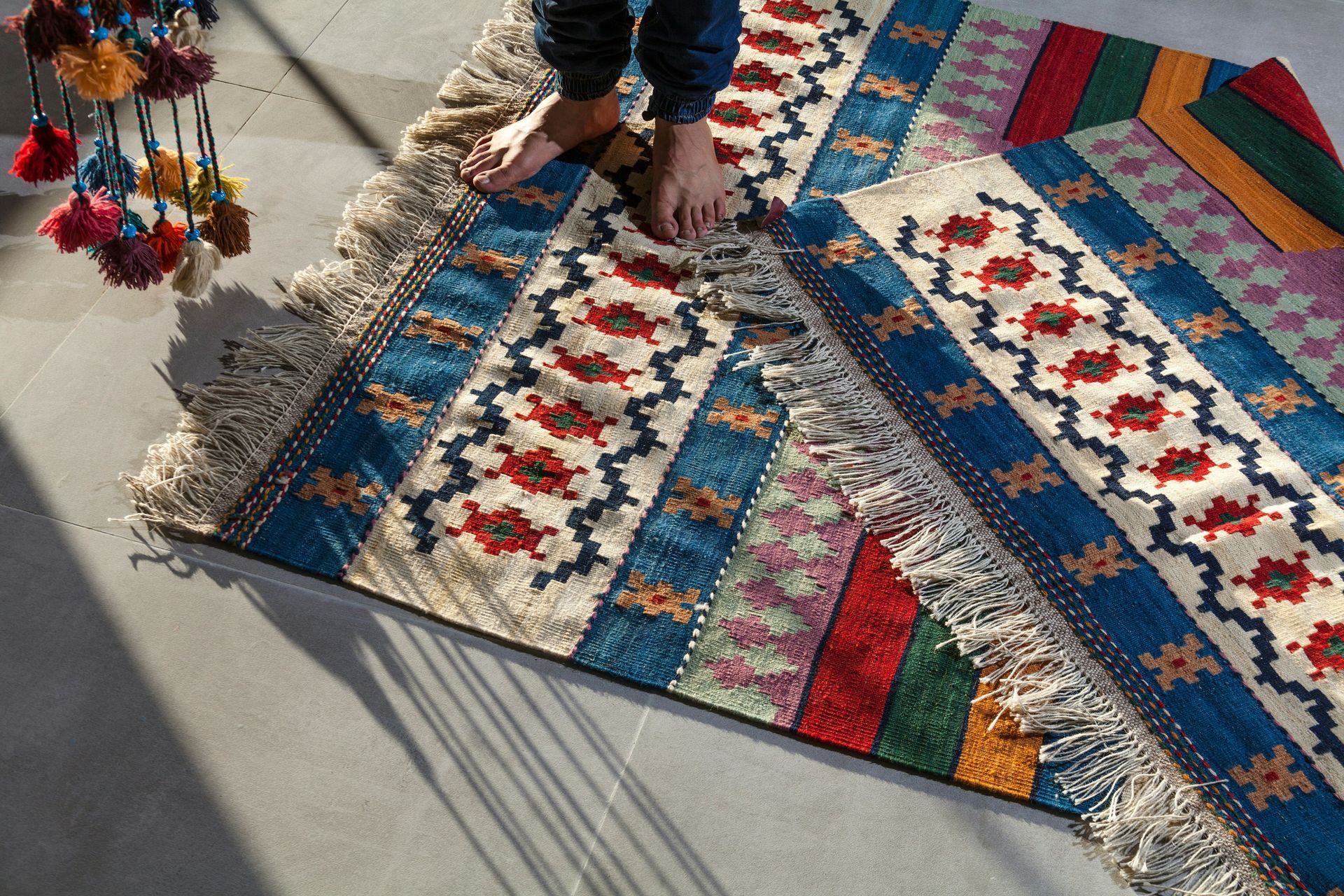
There are several different ways you can protect your carpet from wear and tear and make it look cleaner and healthier for a long time.
These include:
- Rugs & Mats: Rugs and mats add an extra layer of protection to your carpet in high-traffic areas, reducing carpet wear and soil accumulation.
- Rotate Furniture Periodically: Moving furniture every few months distributes foot traffic more evenly and prevents excessive wear and tear in certain spots.
- Avoid Direct Sunlight: Prolonged exposure to sunlight can cause carpets, especially those made from synthetic fibres, to fade over time. Using curtains or UV-protective window films helps preserve the original colour and vibrancy of carpets.
- Change Air Filters: Replacing air filters every 1–3 months helps to maintain indoor air quality and prevent the accumulation of dust and airborne particles into the carpet fibres.
These simple considerations help to maintain the integrity of your carpet over the years and increase its lifespan.
Summary
Although carpets enhance the comfort and aesthetics of your home, they act as a magnet for dust and allergens. Proper care of your carpet starts with understanding the type of carpet, the presence of pets, and activity in the household.
To maintain a spotless carpet floor, start with vacuuming thoroughly. With that, frequently look for stains or spills, and if you find any take quick action to remove them. Always choose an appropriate cleaning method while considering the type of carpet material and the foot traffic.
For long-term care, move your furniture periodically, to distribute the foot traffic evenly across the carpet. You can also use rugs and mats to protect your carpet from soil accumulation.
All in all, just like other types of flooring, carpets also require regular upkeep to maintain their beauty and coziness.
That’s all,
Stay Safe, Stay Klean!
